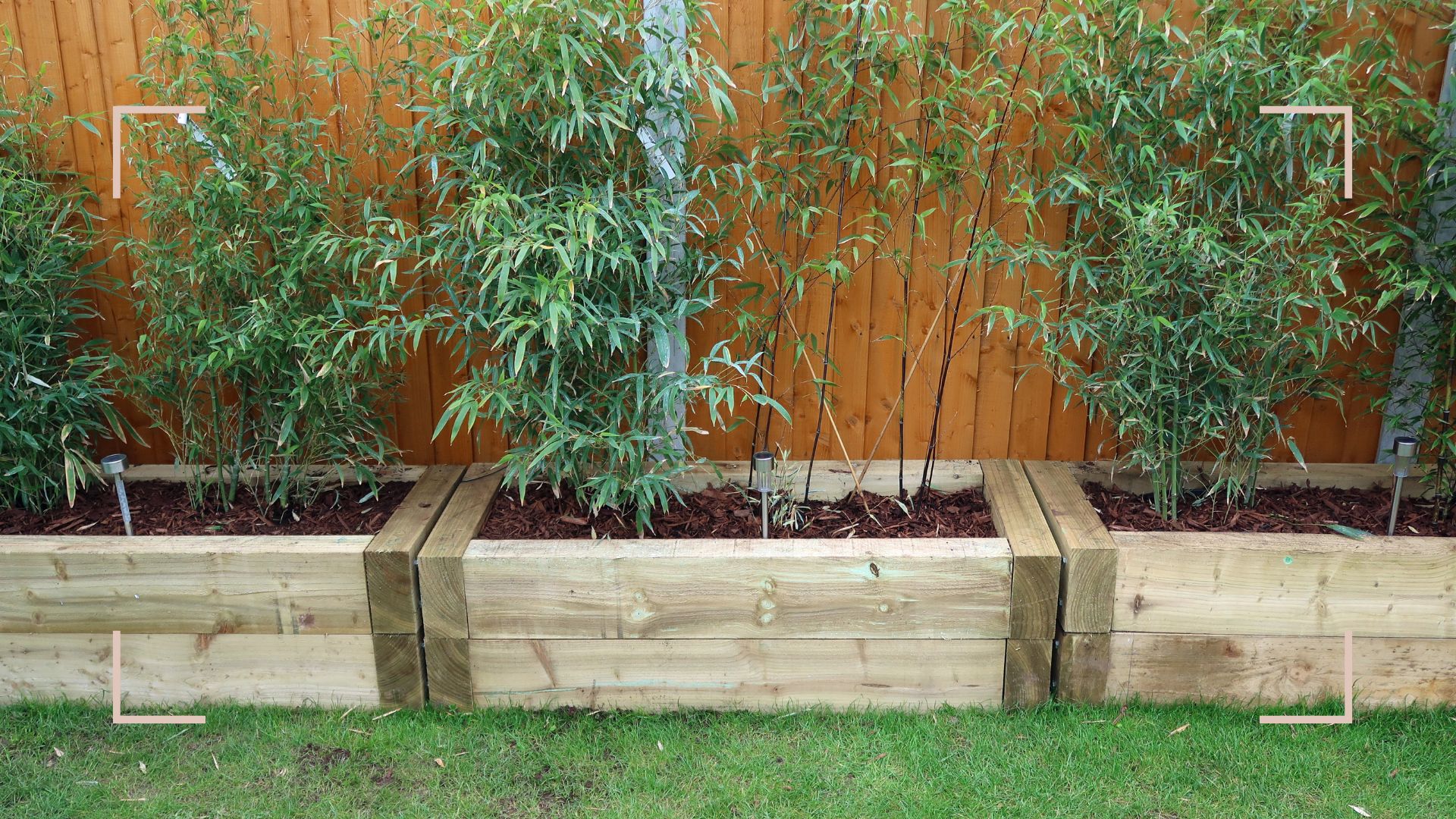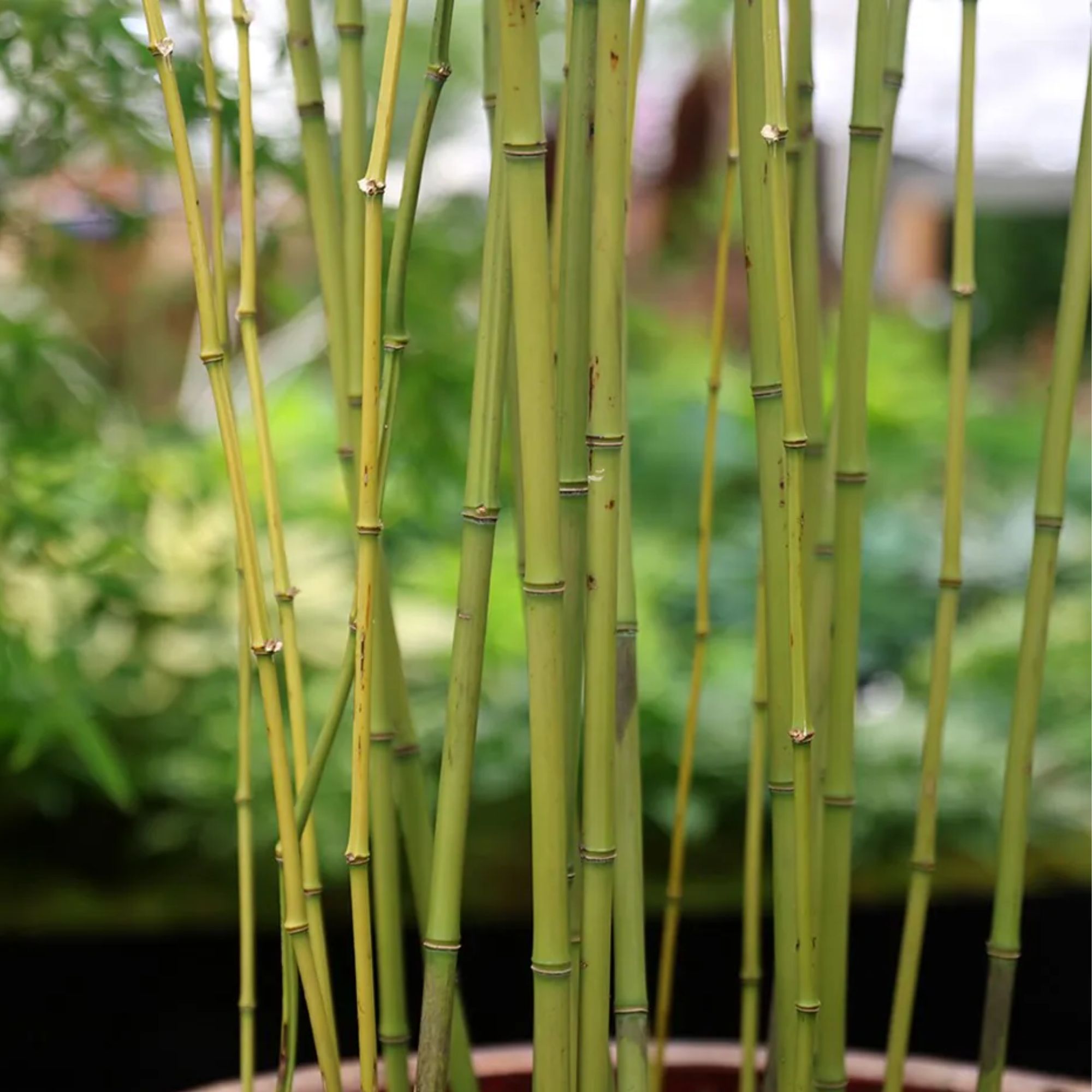How to grow bamboo in your garden for a stunning privacy screen with a tropical edge
One of the fastest-growing privacy plants, here's how to care for bamboo like a pro


Is it any wonder people love bamboo so much? Their upright canes make them a striking addition to any garden – and, better still, they double up as a fast-growing privacy screen, too. Here's how to grow bamboo and transform your outdoor space into a zen oasis.
Easily one of the best privacy plants around, bamboo is an easy way to add height and drama to your planting schemes – and, thanks to their lush evergreen leaves, it's a great way to add some colour to your home in the winter months, too.
As such, learning how to grow bamboo is fast becoming a major gardening trend at home. However, it's worth noting that these plants are incredibly speedy growers, and can pack some serious oomph if you're not too careful.
How to grow bamboo: an expert guide
"Bamboo is a popular garden plant for many reasons – not least of all the fact it’s so easy and quick to grow," says Christopher O'Donoghue, one of the co-directors at Gardens Revived.
"Personally, I love that it adds a sensory element. All you have to do is plant some near a seating area and you’ll find the sound of the breeze rippling through the canes amps up the ambience in no time," he adds.

A gardener with almost two decades of experience under his belt, Christopher set up Gardens Revived with his brother, Andrew, in 2018 to create a thriving family business. Together, they have worked on residential gardens, listed buildings and gardens, flower shows and large estates with some exceeding 70 acres – many with historical significance.
Morris Hankinson, director of Hopes Grove Nurseries, agrees, noting that "bamboo is an excellent garden plant and can even be grown in large pots".
"However, it can run wild in the garden and cause problems if not kept in check," he warns.
Sign up to our free daily email for the latest royal and entertainment news, interesting opinion, expert advice on styling and beauty trends, and no-nonsense guides to the health and wellness questions you want answered.

Morris Hankinson is the founder and managing director of Hopes Grove Nurseries Ltd, the UK’s only specialist grower-retailer of hedging plants. He established the thriving business in 1992, shortly after graduating with a Commercial Horticulture Degree from Writtle College, Essex.
Keen to get started? Here's what you need to know...
What you will need
It's always best to approach any garden task, whether that's growing bamboo or mowing your lawn, with the correct tools ready and to hand.
To that end, then, you will need:
- A loam-based potting compost, such as Levington's Peat-Free John Innes No 3 from Amazon
- A good liquid feed, such as Miracle-Gro Performance Organics All Purpose Concentrated Liquid Plant Food from Amazon
- A bamboo-specific root-barrier, such as the Todds Bamboo Root Barrier from Amazon
- Mulch
- Bubblewrap or horticultural fleece to protect the roots when the temperature drops!
Due to its potentially invasive nature, most experts recommend you avoid planting bamboo directly into the ground. This allows better control and eliminates the potential of later seeking guidance on how to get rid of bamboo roots that have grown wild.
To make this dream a reality, you'll need a large pot at least 45cm deep (try the Millennium cube anthracite from Crocus for size)
You will also, of course, need some bamboo to plant:

RRP: from £20.99| Vigorous and hardy, this decorative bamboo is one of the first to produce new canes each year.

RRP: £22.99 | Awarded an RHS Award of Garden Merit, this pretty variety of bamboo is easy to grow and ideal for for borders or large patio containers.

RRP: from £47.99 | This bamboo specimen has grooved canes that emerge each summer bright green, but if grown in sun, will turn yellowish brown as they mature.
We're also big fans of the umbrella fountain bamboo available at Gardening Express, largely because it's a special non-spreading and non-invasive variety (as well as incredibly beautiful!).
Your step-by-step guide
Now that you have everything you need to hand, it's time to learn how to grow bamboo – although the experts at the Royal Horticultural Society (RHS) advise that you wait until the right time of year to set to work.
"It's best to plant bamboo in spring so that the energy stored in their rhizomes (underground stems) can be used to produce strong new canes in summer," they say.
With that caveat in place, then, here's what to do next...
1) Find the right spot
The most important thing to know when learning how to grow bamboo is this: they like it sunny.
"Bamboo needs a sheltered, sunny spot in the garden where it will bask in at least 6 hours of sunshine a day," says Morris.

This garden has perfectly positioned bamboo growing to act as a natural privacy screen for a hot tub
2) Prep the area
It's one of the top gardening tips for beginners, but preparation is everything when it comes to making sure your bamboo thrives.
If you're looking to plant your bamboo directly into the soil, then, the RHS advises you select a clump-forming variety (as it's less invasive), dig a trench around it that's 1.2 metres deep to create a vertical barrier, and fill it with something like paving slabs or corrugated iron sheets.
You'll also want to "enrich the whole planting area with well-rotted garden compost or manure" – and, if you're planting your bamboo into a container, make sure there's plenty of drainage holes.
You'll still want to use a root barrier in your container, too, to keep your plant from breaking free.
3) Get planting
Now comes the fun bit of our How To Grow Bamboo 101 class: planting!
"If you're planting directly into the soil, you'll want to dig a hole that's twice the size of your root ball, but no deeper than it sits in the pot," says Christopher. "You never want to bury the stem(s)."
If you're planting bamboo in a container, make sure to choose a pot that's large enough, and the RHS says to "add controlled-release fertiliser pellets and water-retaining gel in the compost".
Mulching is, as ever, an excellent way to keep the soil moist but not waterlogged (which just so happens to provide the ideal situation for bamboo).
4) Show your bamboo some TLC
As mentioned already, it's incredibly easy to learn how to grow bamboo, as this plant tends to thrive even when left to its own devices.
That being said, Christopher advises that you:
- Water your bamboo during dry spells, taking care to keep the soil moist but not waterlogged (remember, potted plants will dry out more quickly than those planted directly into the ground)
- Apply a balanced fertiliser during the growing season, taking care to feed your bamboo in early spring in particular
- Use a pair of clean, sharp secateurs or loppers to regularly remove dead or damaged canes. "The aim is to thin out dense growth to improve air circulation, reducing the risk of fungal diseases common in damp climates," says Christopher.
- Keep an eye out for pests like aphids and spider mites, and be sure to treat infestations promptly (we recommend using ladybirds as a natural deterrent)
5) Prune them to size
If you’d like to keep your bamboo to a specific size, Morris says that "you can prune the tops and also cut back any dead, diseased or damaged canes to the ground".
"If the clump of bamboo has become very congested, cut back some canes to improve airflow and use them to support your other plants," he adds.
FAQs
Can you grow bamboo in the UK?
They might put you in mind of sunnier climes, but there are few hundred varieties that are hardy enough to handle the British weather.
As well as requiring a sunny (or partially-sunny) and sheltered spot in your garden, Hopes Grove Nurseries' director, Morris Hankinson, notes that "bamboo prefers moist soil and after planting you will need to water it most days until it is well established".
"After this, watering should only be needed in dry spells," he adds.
Can bamboo grow in pots?
It's actually preferable to grow bamboo in pots, particularly if you don't want them taking over your garden.
"When first planted, give the plants a good mulch of well rotted organic matter and if you do want to use a fertiliser this can be applied every two weeks from spring through summer," says Morris Hankinson or Hopes Grove Nurseries.
"This often isn’t needed in the ground but more important if growing in pots."

How quickly does bamboo grow?
Bamboo grows at an incredible rate, so much so that it can become a problematic invasive plant very quickly if you don't keep it in check.
"An important thing to do when planting in the ground is to protect the roots from growing into your neighbour's garden, up through the cracks in your paving slabs and anywhere else it can get to!"
Pots are preferable, then. If you want yours in the ground, however, Morris advises you to "dig at least 60cm deep and line the area with bamboo barrier fabric or paving slabs, corrugated iron or any other impermeable material before planting".
"This will stop the roots from causing mischief," he says.
Now that you know how to grow bamboo, a zen oasis awaits you... so long as you take care to keep this beautiful plant under control.

Kayleigh Dray is an experienced writer and editor within the world of digital journalism. She kicked off her career in magazines with Cosmopolitan as a news writer. Kayleigh then went on to become part of the digital editorial team at Closer, before a successful seven-year stint at Stylist, where she took command as the site’s editor and editor-at-large.
Nowadays, Kayleigh can be found freelancing for a myriad of titles including Woman & Home, along with a role at Ideal Home where she waxes lyrical about her true love: gardening. She is currently giving her own backyard a woodland-inspired makeover – and there have been whispers of a vegetable plot, too.